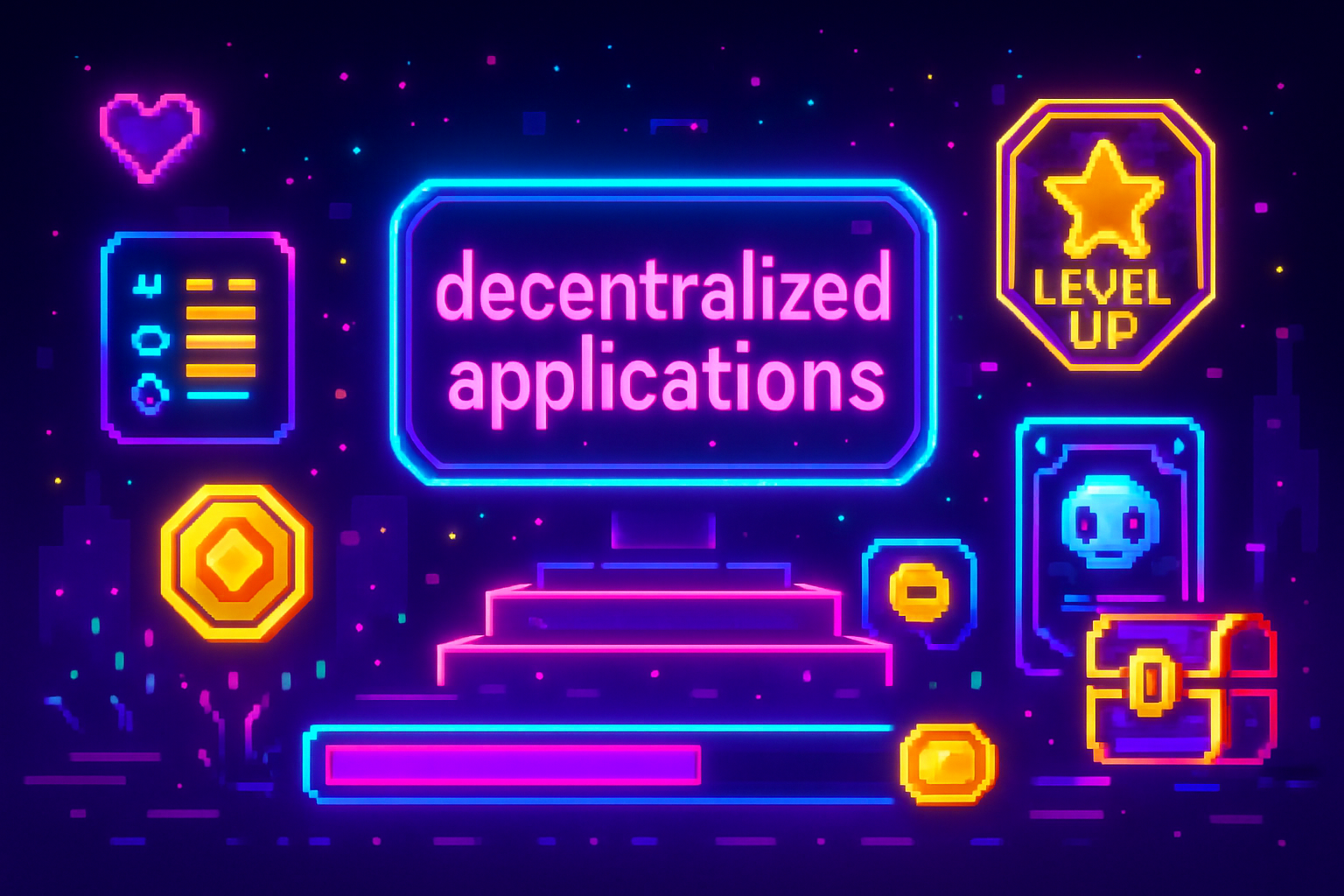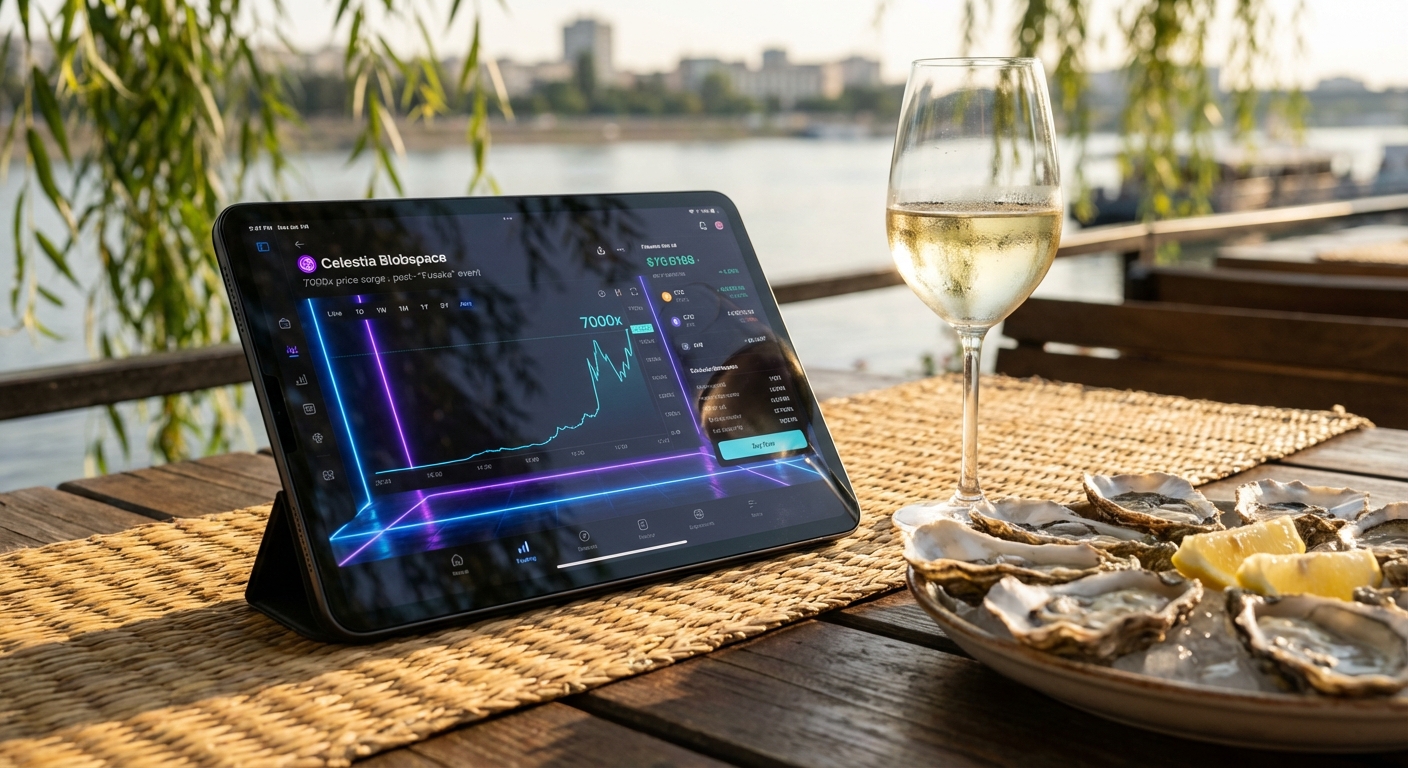How Celestia Powers High-Performance Onchain Trading: The Rise of Modular Blob-Based Exchanges

Picture a world where trading onchain isn’t just possible, but faster, cheaper, and more transparent than ever before. That’s the promise of Celestia and its modular approach to blockchain infrastructure. As of today, Celestia (TIA) is priced at $0.9919, holding steady amid the latest 24-hour swings. But the real story is what’s happening under the hood: a seismic shift in how decentralized exchanges (DEXs) are built and scaled, powered by blobspace and modular Central Limit Order Books (CLOBs).
Why Modular Blockchains Are Changing the Game for Onchain Trading
For years, onchain order books were considered out of reach for DeFi. The problem? Monolithic blockchains like Ethereum simply couldn’t handle the data throughput or cost requirements needed for high-frequency trading. Every order, every cancellation, every match – all had to fit into congested blocks, driving up gas fees and slowing execution to a crawl.
Celestia flips this narrative. By decoupling consensus and data availability from execution, it lets developers build specialized trading networks that don’t inherit the bottlenecks of legacy chains. In simple terms: execution environments like rollups or appchains can post their data as blobs on Celestia, leveraging its high-throughput data layer while retaining control over their own logic.
This architecture unlocks new possibilities for CLOB-based DEXs such as Bullet Rollup and Hibachi Exchange – projects that are pushing the boundaries of what’s possible in modular blockchain CLOBs.
The Rise of Blob-Based Exchanges: How Data Blobs Power High-Performance Trading
So what exactly is a data blob, and why does it matter for trading? In Celestia’s world, blobs are large chunks of off-chain data published directly to the chain’s data availability layer. Unlike traditional transactions that compete for limited blockspace, blobs can be massive – accommodating entire order books or trade histories with minimal cost per byte.
This means exchanges can now operate with real-time transparency and composability without sacrificing speed or cost-efficiency. Thanks to innovations like Data Availability Sampling (DAS) and Blobstream, these blobs are both secure and verifiable by anyone running lightweight nodes.
“For years, order books were too heavy for DeFi. With Celestia blobs, we’re finally seeing scalable CLOBs that rival TradFi performance. ”
Celestia Trading Networks: Unstoppable Apps at $0.9919 TIA
The impact is already visible across the modular DeFi landscape:
- Bullish on Blobspace: New exchanges like Hibachi and XO Market are leveraging blob-based architectures to offer sub-second matching engines – something previously reserved for centralized platforms.
- Composability Unlocked: Developers can spin up custom rollups using Celestia as a shared data layer, enabling plug-and-play interoperability between different trading protocols.
- Cost Predictability: With TIA at $0.9919 today, transaction costs remain stable and predictable compared to volatile gas markets elsewhere.
Celestia (TIA) Price Prediction 2026-2031
Professional outlook based on modular blockchain adoption, onchain trading innovation, and evolving DeFi markets.
| Year | Minimum Price | Average Price | Maximum Price | Year-over-Year Change (Avg) | Market Scenario Insights |
|---|---|---|---|---|---|
| 2026 | $0.90 | $1.30 | $2.10 | +31% | Renewed DeFi interest and modular blockchain adoption drive growth. Volatility remains high as CLOB DEXs mature. |
| 2027 | $1.10 | $1.70 | $2.80 | +31% | Institutional experimentation with modular DEXs. Regulatory clarity improves sentiment. Competition from other modular chains increases. |
| 2028 | $1.40 | $2.20 | $3.60 | +29% | Wider adoption of blob-based order books and cross-chain interoperability. Strong bull cycle possible if on-chain volumes surge. |
| 2029 | $1.60 | $2.65 | $4.50 | +20% | Scaling solutions and partnerships expand Celestia’s ecosystem. Macro headwinds may limit upside in bearish scenarios. |
| 2030 | $1.80 | $3.10 | $5.30 | +17% | Mainstream DeFi usage on modular networks. Potential for exponential growth if CLOB DEXs outcompete CEXs. |
| 2031 | $2.10 | $3.60 | $6.20 | +16% | Mature, highly-scalable onchain trading landscape. Regulatory risk persists, but Celestia is considered a backbone for many DeFi protocols. |
Price Prediction Summary
Celestia (TIA) is positioned for robust growth as modular blockchain architectures gain traction, particularly in powering high-performance decentralized trading. Price appreciation is expected to be progressive, reflecting increased adoption of onchain order books and modular DeFi solutions. However, volatility and competition remain significant, keeping min/max ranges wide.
Key Factors Affecting Celestia Price
- Adoption of modular blockchain infrastructure by DeFi protocols and exchanges
- Success of high-performance, blob-based CLOB DEXs on Celestia
- Integration of AI and advanced order-matching technologies
- Market cycles, including crypto bull/bear trends
- Regulatory clarity and institutional involvement
- Competition from other modular and data-availability blockchains
- Macro-economic factors and overall crypto market sentiment
Disclaimer: Cryptocurrency price predictions are speculative and based on current market analysis.
Actual prices may vary significantly due to market volatility, regulatory changes, and other factors.
Always do your own research before making investment decisions.
This isn’t just an incremental improvement; it’s a paradigm shift in how we think about market structure in crypto. For those tracking how CLOBs on blobs are transforming trading, it’s clear that modularity is more than a buzzword – it’s quickly becoming the foundation of high-performance onchain finance.
As the dust settles around the old limitations of monolithic blockchains, traders and builders are gravitating to Celestia’s modular blueprint for a reason: speed, scale, and sovereignty. By treating data blobs as first-class citizens, exchanges can now achieve throughput numbers that were once the exclusive domain of centralized giants. The result is a new generation of trading venues that are not only transparent and accessible but also genuinely performant.

From Theory to Practice: Real-World Examples of Blob-Based CLOBs
Let’s zoom in on a few standout projects harnessing Celestia’s blobspace for high-performance onchain trading:
Top Blob-Based DEXs Building on Celestia
-

Bullet Rollup: A pioneering on-chain order book DEX leveraging Celestia’s modular data availability to deliver high-throughput, low-latency trading. Bullet Rollup is designed for traders seeking performance and transparency, utilizing blobs for scalable order matching.
-

Hibachi Exchange: This decentralized exchange integrates Celestia’s blob infrastructure to power a robust CLOB, enabling efficient, permissionless trading with deep liquidity. Hibachi Exchange is focused on composability and seamless user experience.
-

XO Market: XO Market is an innovative blob-based DEX built on Celestia, offering advanced trading features and real-time order execution. By harnessing Celestia’s modular architecture, XO Market achieves scalability and reliability for on-chain traders.
Bullet Rollup is pioneering ultra-fast order matching by batching entire order books into blobs, then settling trades asynchronously. This design minimizes latency while maintaining full auditability. Hibachi Exchange takes a similar approach but layers in advanced liquidity incentives and cross-rollup composability, giving traders deep books and tight spreads without centralized risk. XO Market, meanwhile, is experimenting with AI-powered market making directly on modular infrastructure, further blurring the line between TradFi and DeFi.
What Sets Celestia’s Blobspace Apart?
Three technical pillars underpin Celestia’s dominance in modular blockchain CLOBs:
- Data Availability Sampling (DAS): Ensures anyone can verify that all trade data is published and available, no more hidden orders or opaque settlement.
- Blobstream: Offers real-time streaming of large datasets, letting DEXs update order books at web2 speeds while remaining fully decentralized.
- Execution Flexibility: Developers choose their own execution layer, EVM-compatible rollups, custom VMs, or even hybrid models, while relying on Celestia for scalable data posting.
This modularity doesn’t just benefit developers; it translates to tangible wins for traders: lower fees, faster trades, and a level playing field where anyone can audit the market in real time.
The old DeFi bottlenecks are fading fast. With TIA at $0.9919 and blobspace powering new trading primitives, we’re entering a golden era for onchain markets.
What’s Next for High-Performance Onchain Trading?
The race is on. As modular blockchain CLOBs become the new standard for DeFi trading networks, expect rapid innovation in both user experience and backend performance. Features like zero-knowledge proofs are already being layered into blob-based architectures to further boost privacy and efficiency, a topic explored in depth in our guide on CLOBs on Celestia blobs and zk-proofs.
The bottom line? With TIA holding at $0.9919, the economics of running high-frequency exchanges have never been more accessible or sustainable. For builders and traders alike, exploring Celestia blobspace DeFi isn’t just an opportunity, it’s quickly becoming table stakes for anyone serious about high-performance onchain trading.







